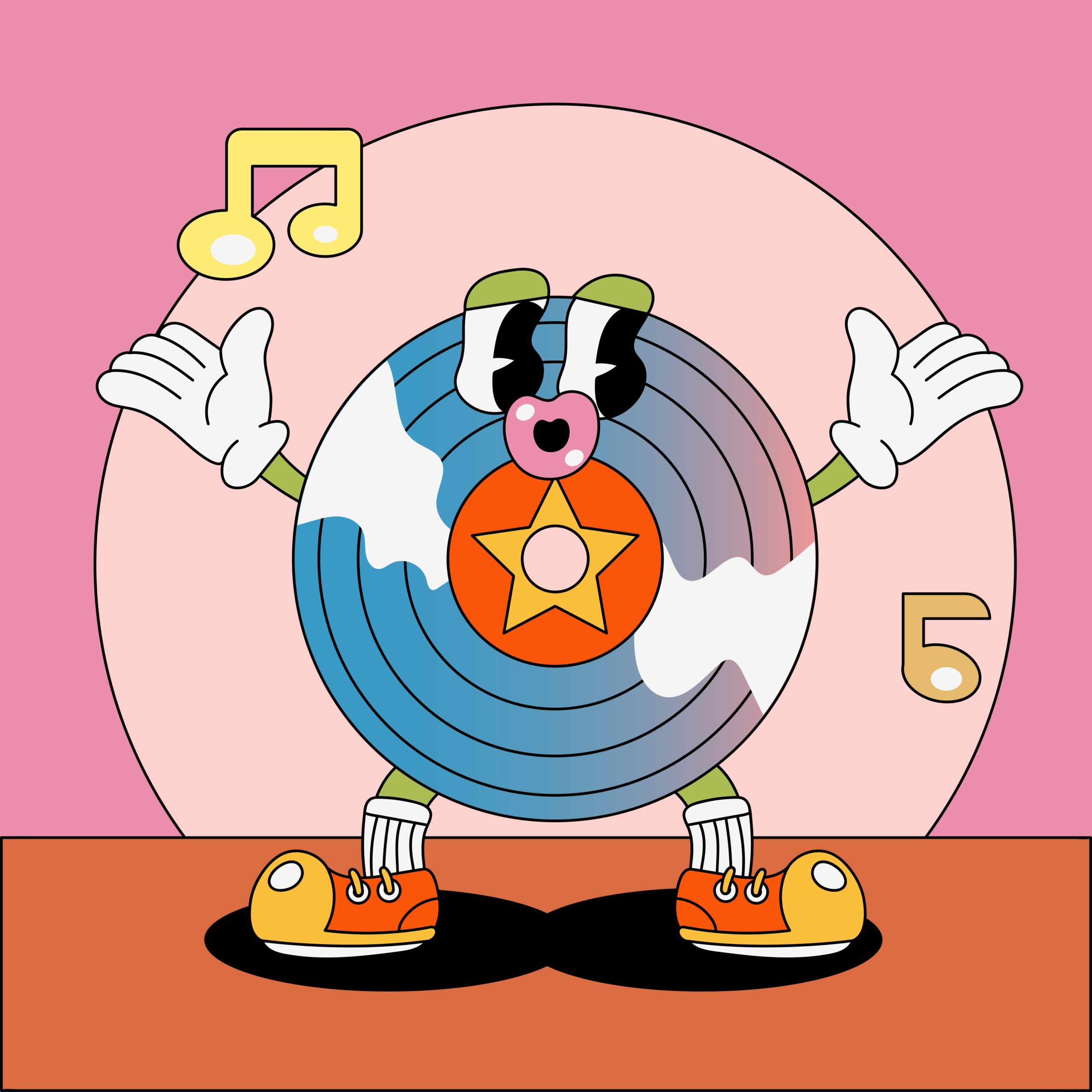The sound of 90s hip-hop continues to captivate many producers and listeners even today. One of its charms is the raw and groovy drum sound. This article will explain the key points for recreating this sound.
(more…)Tag: Beatmaking Tips
-
Do Phase Issues Occur in Stereo or Mono?

Yes, phase issues occur in both stereo and mono, but their effects differ:
In Mono
- Causes: Multiple microphones, mismatched signal processing, effects like delay/reverb.
- Effects: Frequency cancellation (comb filtering), thin or hollow sound, reduced volume.
In Stereo
- Causes: Poor stereo miking, excessive stereo effects, time/phase differences between channels.
- Effects: Distorted stereo image, mono compatibility issues, frequency imbalance, unnatural localization.
Stereo-Specific Concern: Mono Compatibility
- Issue: Left and right phase differences can cause sound to disappear in mono.
- Solutions: Correct mic placement, phase alignment tools, mono checks, careful stereo effect use, M/S processing.
While both stereo and mono face phase issues, stereo introduces more complexity. Proper techniques and verification are crucial.
-
Master Track vs. Master Bus: Key Differences

- Definition
- Master Track: A visible DAW track where all audio converges.
- Master Bus: A conceptual signal path routing all audio to the output.
- Display
- Master Track: Visible and editable in DAWs.
- Master Bus: Often hidden, represents signal flow.
- Function
- Master Track: Handles global settings and effects.
- Master Bus: Focuses on mix-wide processing.
- Context
- Master Track: Digital music production term.
- Master Bus: Used in both digital and analog audio.
Conclusion
The terms overlap in modern DAWs but differ in focus: the master track is visible and functional, while the master bus emphasizes signal flow and output.
- Definition
-
Differences Between Audio Systems and Sound Systems

While the terms “audio system” and “sound system” are often used interchangeably, there are subtle differences between them. Here are the main distinctions:
1. Scope and Scale
Audio Systems:
- Typically refer to home or personal audio equipment
- Relatively small-scale, focusing on personal music listening and entertainment
Sound Systems:
- Often include more extensive and large-scale audio equipment
- Cover large venues like live events, concert halls, and movie theaters
2. Applications
Audio Systems:
- Mainly used for music playback and home entertainment
- Often emphasize high-quality audio reproduction, such as Hi-Fi audio
Sound Systems:
- Include music playback, voice amplification, and sound effect control
- Cater to more diverse uses like live performances, public announcements, and theater acoustics
3. Components
Audio Systems:
- Typically consist of basic components like CD players, amplifiers, and speakers
Sound Systems:
- Include audio system components plus more diverse and specialized equipment such as mixers, equalizers, various effects processors, and microphone systems
4. Level of Expertise
Audio Systems:
- Often include consumer-oriented products that are relatively easy to use
Sound Systems:
- More likely to include professional-grade equipment requiring specialized knowledge
Summary
While there is significant overlap between audio systems and sound systems, sound systems tend to encompass a broader range of more specialized applications. However, these terms are often used flexibly depending on the context, and strict distinctions are not always made.
-
What’s the difference between Instrumental Hip-Hop and Hip-Hop Instrumentals?

Instrumental Hip-Hop and Hip-Hop Instrumentals are very similar concepts, but there are subtle differences. The main difference between the two lies in their origins and production intentions.
Instrumental Hip-Hop
Instrumental Hip-Hop is primarily characterized by:
- Independent genre: A music genre created from the start without vocals.
- Production intent: Made for listening, not necessarily for rappers.
- Musicality: Tends to be more experimental and incorporates various musical elements.
- Artists: Representative artists include DJ Shadow, RJD2, and Nujabes.
Hip-Hop Instrumentals
On the other hand, Hip-Hop Instrumentals are:
- Derivative: Vocals removed from existing hip-hop tracks, or instrumental versions of tracks made for rappers.
- Production intent: Mainly intended for rappers to use for freestyle or practice.
- Musicality: Maintains typical hip-hop structure and has space intended for vocals.
- Usage examples: DJ mixes, karaoke versions, remix materials, etc.
Summary
While the differences are subtle, Instrumental Hip-Hop is a more artistic and independent genre, whereas Hip-Hop Instrumentals are closely related to existing hip-hop tracks. However, these boundaries are sometimes blurred, and many artists create works that incorporate elements of both.
-
What’s the difference between volume and gain?

In music production, volume and gain are important concepts that may seem similar but are actually different. Understanding the difference between the two is essential for quality music production. Below, we explain the characteristics and differences of each in detail.
Volume
Volume is the final stage control for adjusting the loudness of sound.
Characteristics:
- Positioned at the end of the signal chain
- Determines the final volume heard by the listener
- Measured in decibels (dB)
- Changes the loudness of sound without affecting sound quality
Usage examples:
- Adjusting track balance during mixing
- Adjusting overall volume during mastering
- Adjusting playback volume to suit the listening environment
Gain
Gain is a control that amplifies or attenuates the strength or amplitude of a signal.
Characteristics:
- Applied at an early stage in the signal chain
- Changes the strength of the input signal
- Measured in decibels (dB)
- Can potentially affect the characteristics and quality of the signal
Usage examples:
- Amplifying input signal in microphone preamps
- Adjusting signal level before effect processing such as compressors and equalizers
- Adjusting the intensity of overdrive or distortion effects
Main differences:
Application stage:
- Gain: Applied early in the signal chain
- Volume: Applied at the end of the signal chain
Impact on sound quality:
- Gain: Can potentially change signal characteristics
- Volume: Usually does not affect sound quality
Purpose:
- Gain: Optimizes signal strength and provides appropriate input level for subsequent processing
- Volume: Adjusts final output level and balances overall sound
In music production, properly using gain and volume can create clear and powerful music. The general workflow is to optimize signal strength with gain and then adjust the final volume balance with volume controls.
-
What Beginner Beatmakers Should Focus on First

Introduction
If you are new to beatmaking, you may be unsure where to start. This article will explain the key points that beginners should focus on when they first start making beats.
Decide on the musical direction and theme
First, it’s important to decide what genre of music you want to create and what theme you want to pursue in your work. This will help define the direction of your music production and make the process smoother.
Mindset to keep in mind when first publishing your beats
When publishing your beats, it’s important to keep the following points in mind:
Don’t worry about perfection
As a beginner, it’s crucial not to get too caught up in achieving perfection. In the beginning, it will be difficult to create works that match your ideal vision due to technical inexperience. However, if you become too concerned with perfection, you may never finish your work, which defeats the purpose. First, aim to complete your work in your own way.
Don’t worry about sound quality
While using high-quality sound sources is important, beginners don’t need to obsess over sound quality. You don’t need the latest equipment or software. What matters is creating music with the equipment and software you have available. As your skills improve, the sound quality will gradually improve as well.
Don’t worry about structure
The structure of a beat is an important element in captivating listeners, but beginners don’t need to be overly concerned with it. First, try creating works with your own structure. As you create more music, you will gradually understand the importance of structure.
Don’t worry too much about the quality of individual tracks
The quality of the individual tracks that make up a beat greatly affects the overall quality of the work. However, beginners don’t need to be overly concerned with the quality of each track. First, focus on creating tracks in your own way. As your skills improve, the quality of the tracks will gradually improve as well.
Don’t worry about view counts
As a beginner, you don’t need to be overly concerned with view counts. First, focus on creating your own works. As the quality of your work improves, the view counts will gradually increase. If you become too concerned with view counts, you may neglect the actual creation of your music, which defeats the purpose.
Don’t worry about SEO
SEO is an important factor in getting your work out to many people, but beginners don’t need to be overly concerned with it. First, focus on creating your own works. You can think about SEO once your work is mostly complete. If you become too concerned with SEO, you may neglect the actual creation of your music, which defeats the purpose.
As a beginner, instead of seeking perfection, focus on creating your own works first.
Two things to do after making a beat
After making a beat, do the following two things:
Listen to it “twice” after making it, using a different device or speakers.
After finishing a beat, it’s natural to check it with your own ears, but that alone is not enough. To objectively evaluate your work, make sure to listen to it at least twice.
Listen to it on a different device
By listening to your work on different equipment than the speakers or headphones you used for production, you may find that the impression of the work changes. By checking your work in the environments where listeners typically listen to music, such as smartphones or car audio systems, you can assess the completeness of your work.
Listen to it after some time has passed
Immediately after production, you may have a strong attachment to your work, making it difficult to evaluate objectively. By stepping away from the work and listening to it again after some time has passed, you may discover new insights or ideas.
Seek feedback
There may be areas for improvement that are difficult to notice on your own. By having trusted friends or mentors listen to your work and provide feedback, you can improve the quality of your work.
Start working on the next beat
After finishing a beat, start working on the next one.
To improve your skills
Your beatmaking skills will improve with each piece you create. In your next work, aim for even greater heights by utilizing the experience gained from your previous work.
To maintain motivation
To continue beatmaking, it’s important to maintain motivation. By starting the next work, you create a new goal and can maintain motivation.
To expand your ideas
In beatmaking, ideas are important. In your next work, try a different approach than before. By incorporating new ideas, you can expand your possibilities.
Objectively evaluating your work and applying it to your next creation is essential for improving your beatmaking skills. With each piece you create, you should be able to feel your own growth.
It’s important to objectively evaluate your own work and apply it to your next creation.
7 points to keep in mind as you become more experienced
As you become more familiar with beatmaking, keep the following 7 points in mind:
Specifically envision what kind of users will listen
When making beats, it’s important to specifically envision what kind of users will listen. Consider age group, gender, preferred genres, lifestyle, etc., and clarify the target listener profile. This allows you to create beats that suit the listeners’ preferences. For example, if targeting teenage girls, incorporating trendy pop and catchy beats may be effective. On the other hand, if targeting men in their 30s, more mature sounds like hip-hop or R&B might be preferred.
Be aware of listeners’ questions/problems and how to solve them
Aim to solve listeners’ questions or problems through your beats. For example, providing beats that match listeners’ needs, such as wanting to relax, feel energized, or increase concentration, will make your beats more beloved by many. To solve listeners’ questions or problems, you need to adjust elements like the beat’s tempo, tone, and atmosphere. You can cater to listeners’ needs by adjusting beat elements, such as using a slow tempo and acoustic tones to enhance relaxation, or uptempo and energetic beats to boost energy.
Create the beat structure
Considering the structure of the beat is important to avoid boring the listener. Create a structure with each part of the beat in mind, such as intro, verse, chorus, bridge, and outro. Also, adding variation to the beat’s development can draw in the listener. It’s important to create a structure while considering the flow of the beat, such as building excitement in the hook, changing the rhythm in the break, and leaving an afterglow in the ending.
Come up with an interesting title
The title of the beat is an important element to attract listeners’ interest. Consider titles that not only express the beat’s atmosphere but also appeal to listeners’ emotions. For example, the title “Midnight Groove” evokes a moody late-night atmosphere. The title “Sunrise Melody” gives a positive and bright image, like the rising morning sun. By giving titles that stimulate listeners’ emotions, you can increase interest in the beat.
Be mindful of the beat’s catchiness
The catchiness of the beat is an important factor for staying in listeners’ memory. You can increase the catchiness of the beat by incorporating memorable melodies, rhythm patterns, hooks, etc. Simplicity is also important. Overly complex beats are harder to remember. Repeat simple and impressive phrases to increase the beat’s catchiness.
Consider monetization
Consider monetizing your beatmaking, not just as a hobby. There are various ways to monetize, such as selling beats, providing licenses, and producing. When considering monetization, be careful with copyright management. Manage sound sources appropriately by obtaining permission to use sampling materials, using copyright-free sound sources, or creating original sound sources.
Register your site with Google Analytics and Google Search Console
When creating a website to publish your beats, register it with Google Analytics and Google Search Console. Using these tools, you can analyze site views, traffic sources, search keywords, etc. Based on the analysis results, find areas for improvement on the site, implement SEO measures, and deliver your beats to more listeners. Also, understanding listener attributes and preferences can lead to creating beats that match your target audience.
By keeping these 7 points in mind when making beats, you can create beats that are loved by listeners. Standing in the listeners’ perspective and improving the quality of your beats will lead to your growth as a beatmaker.
By being mindful of these points, you can deliver your work to more listeners.
Summary
The first thing beginners should focus on in beatmaking is not seeking perfection. First, concentrate on creating works and gradually hone your skills. As you become more experienced, it’s important to create works with listeners in mind.
If you’re interested in beatmaking, definitely give it a try. It may feel difficult at first, but by steadily creating works, your skills will surely improve. The important thing is to start casually.
-
What is Drum Buss?

Drum Buss is an audio effect introduced in Ableton Live 10 that combines multiple functions to enhance drum sounds with punch and presence. This versatile plugin integrates features like compression, saturation, and transient shaping, allowing you to dramatically transform the overall sound of your drums with ease.
Key Features and Parameters
Drum Buss includes the following main parameters, each providing specific sonic effects:
- Trim: Adjusts input volume.
- Crunch: Enhances mid-high frequencies, adding edge to snares and hi-hats.
- Transients: Controls attack; positive values create a fuller sound, while negative values tighten it.
- Boom: Boosts low-end frequencies, adding a unique “booming” bass sound.
- Freq: Sets the frequency range for the low-end enhancer.
Use Cases
- Adds punch and power to entire drum tracks.
- Brings presence to specific elements like kicks or snares.
- Can also be used on basslines for added weight and depth.
Development Background
Drum Buss was designed as a conceptual “non-existent hardware unit,” focusing on intuitive controls for modern music production. Inspired by distorted drum sounds in genres like hip-hop, rock, and electronic music, it simplifies achieving professional-quality drum processing.
Drum Buss is particularly beginner-friendly and highly effective for polishing drum tracks or enhancing overall sound quality.
-
Causes and Solutions for Amateur-Sounding Beats

- Lack of Variation: Not Using Arrangement or Automation
- Repeating the same loop can make a track monotonous. To improve, focus on creating variations in sound for each section of the track.
- Use automation to adjust filters or volume, adding dynamics to the music. Changing the atmosphere in parts like the intro or chorus can create a sense of storytelling.
- Weak Drum Programming
- Simple rhythms or unnatural grooves can detract from the track’s quality.
- Enhance realism by adjusting velocity for dynamic strength and adding slight timing shifts. Include drum fills or breaks between sections to maintain listener interest. Also, ensure that drum samples match the overall vibe of the track.
- Not Using Sidechain Compression
- When the kick and bass clash, it can muddy the low-end frequencies. Sidechain compression reduces the bass volume when the kick hits, resulting in a cleaner sound.
- Tools like LFO Tool or Kickstart can simplify this process. Leveraging pumping effects through sidechain compression adds rhythm and a professional feel to the track.
Conclusion
Focusing on arrangement, drum programming, and sidechain compression can significantly elevate your track’s quality. Incremental improvements in these areas are key to mastering music production.

